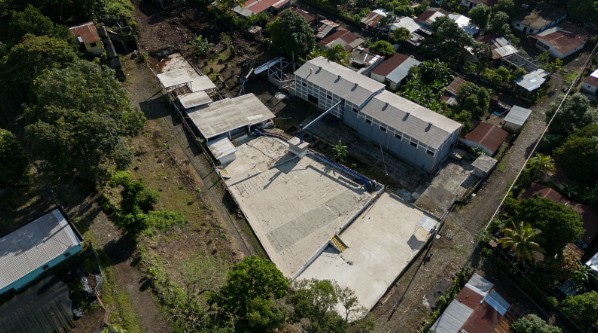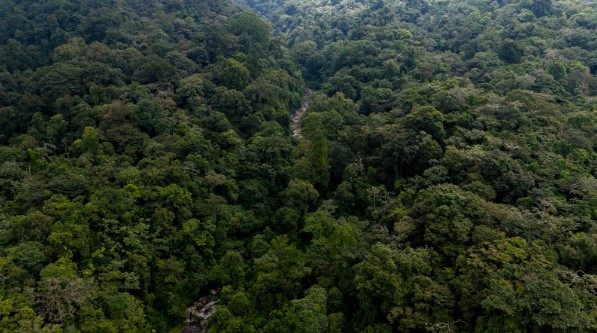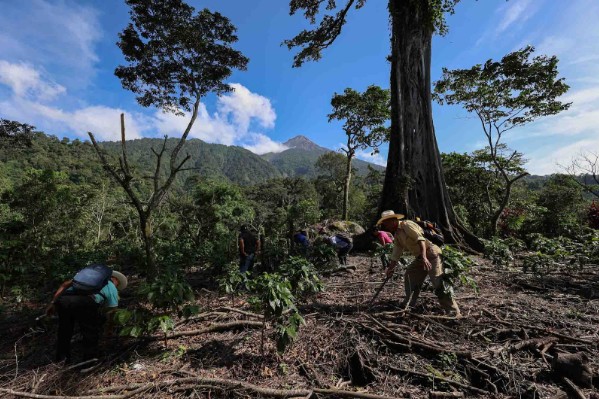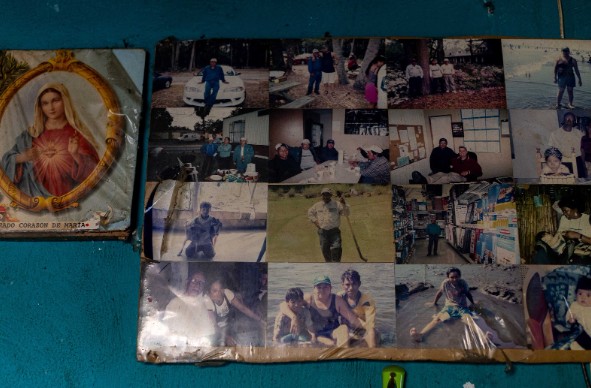Nueva Trinidad: A Community that knows how to reinvent itself

Las columThe columns of smoke from the wood stoves signal the start of the day in the Colony 15th of October, Nueva Trinidad, a small coffee-growing town in the Department of Escuintla, Guatemala.
One of those stoves belongs to Luisa Camposeco, where she cooks tortillas and heats the coffee she produces on her farm.
This grain is their flagship product, and the community markets it through the Cooperative Agricultural Integral “Unión Huista” R.L., which is part of the Guatemalan Community Forestry Association Utz Che’.
Right next to Luisa’s house are the facilities of the cooperative, which is associated with 36 women and 38 men from the community.
The president and legal representative, Damián López, explains that the cooperative’s journey began out of the need to find a market where they could sell their products at better prices. It was also driven by the urgency to receive training to improve their practices in planting and maintaining coffee plantations, thereby increasing their production.
“The cooperative didn’t develop overnight; it had its ups and downs, but that didn’t make us give up on everything we wanted to achieve,” explains Damián.

Their new goal is to make their production increasingly environmentally friendly and to open new markets.
Healing the soil
On the stone and gray sand streets of Nueva Trinidad, cornfields and coffee plantations begin to appear on both sides of the road.
As the saying goes in the town, “Here, what doesn’t grow is because it hasn’t been planted.” This is not by chance; the land’s richness is further enhanced by the good agricultural practices in the cooperative. For some time now, cooperative members have been able to request raw coffee pulp from the cooperative to use as fertilizer for their soils.

With support from the Mesoamerican Territorial Fund (MTF) of the Mesoamerican Alliance of Peoples and Forests (Spanish acronym: AMPB), just a few meters from the patio where they dry the coffee, the cooperative is working on the foundations of what will be a biofactory for organic fertilizers.
The project funding benefits approximately 175 people who work on 452 hectares of coffee plantations and protect around 860 hectares of forest. The funds also include training for the production of organic fertilizers.
“What we want is to strengthen our soil, protect the environment, and ensure that our members have a safer life without the risk of chemical poisoning. This project through the FTM came to us like a ring to a finger,” explains Damián. This initiative is steering the cooperative toward its goal of achieving organic certification to access other markets.
The water and the forest in our veins
In the center of Nueva Trinidad stands a gigantic ceiba tree, from which the houses and streets extend like its roots. A few blocks away, a spring of water emerges.
“We said, ‘It’s forbidden to destroy a forest in this area where the spring that supplies this community is located. Instead of cutting down, let’s plant,” Damián proudly recounts.

Farther from Nueva Trinidad and the coffee plantations, up the mountain, there is a forest that the community protects.
“We are safeguarding more than 12 ‘caballerías’ (860 hectares) that we haven’t touched, which is what the government of this country should truly value. It benefits the whole world because these mountains are the lungs of the world, providing the air we breathe,” emphasizes Damián.
But there was something more on that mountain that the new settlers did not know. When they arrived here in 1998, Central America was hit by one of the most powerful and deadly hurricanes of recent decades: Hurricane Mitch.
The cloudy and stormy skies prevented them from realizing that they had settled very close to another threat: the Volcano of Fire (‘Volcán de Fuego’).
.

The return is a fight
All the original settlers of Nueva Trinidad actually come from the Huista Region: six municipalities in the department of Huehuetenango in Northwestern Guatemala.
“We were from the highlands and came here. We didn’t reach our place of origin,” recounts Juan Hernández, reflecting on the armed internal conflict in Guatemala, particularly in the 1980s.
Guatemala experienced an armed conflict from 1962 to 1996 that led to severe human rights violations. According to the Organization of American States (OAS), the most violent period was identified between 1978 and 1983.
Entire communities were devastated by a military campaign called “Victoria 82,” aimed at the destruction of indigenous villages and peasant communities, forcing them to flee.

In the Huista Region, there are no volcanoes, so the new settlers felt very insecure when they were relocated to this area after nearly 20 years living in Chiapas due to displacement.
And their concerns were justified; in June 2018, the Volcano of Fire erupted, completely burying the neighboring community of San Miguel Los Lotes.
Although no one died in this disaster in Nueva Trinidad, it significantly affected their coffee plantations, causing production to plummet to just 1,000 quintals in a whole year.
Roberto González is part of the Indigenous Committee of Nueva Trinidad (Spanish acronym: CINT), an organized group whose mission is to find a new land where the community can resettle.
“The government declared the land uninhabitable, which means it cannot be lived on, and yet we are living here because we have nowhere else to go,” Roberto protests.

Falling and Rising Again
Nueva Trinidad has two large ravines on either side of the community that close in like a vise. These were created by the 2018 eruption and serve as a constant reminder of the volcano’s power and its ongoing threat.
Although the community members would appreciate a new place to live, they want to continue growing their coffee on this gray, fertile land. To achieve this, they need more support, particularly to prevent young people from migrating in search of work.

According to Cecilia Montejo, a young 29-year-old who works at the cooperative and whose father is a member, a significant opportunity to prevent young people from migrating is to strengthen the capacities of the cooperative and its members.
“Maybe we don’t have university degrees, but empirically we’ve learned a lot and given our best. I would really like to see projects that impact and help our community,” Cecilia confides.
Luisa, Damián, Juan, Cecilia, and everyone in Nueva Trinidad hope to be able to add another segment to their mural. A new chapter that will reflect their future aspirations and honor the strength and resilience they have shown in rising up and continuing to forge new paths.
“If you are happy with what you love, you stay motivated, and no matter the falls or setbacks, you get back up. So falling and getting up, I think, is not falling; it’s strengthening yourself, gaining encouragement, and continuing to work,” Damián assures.
